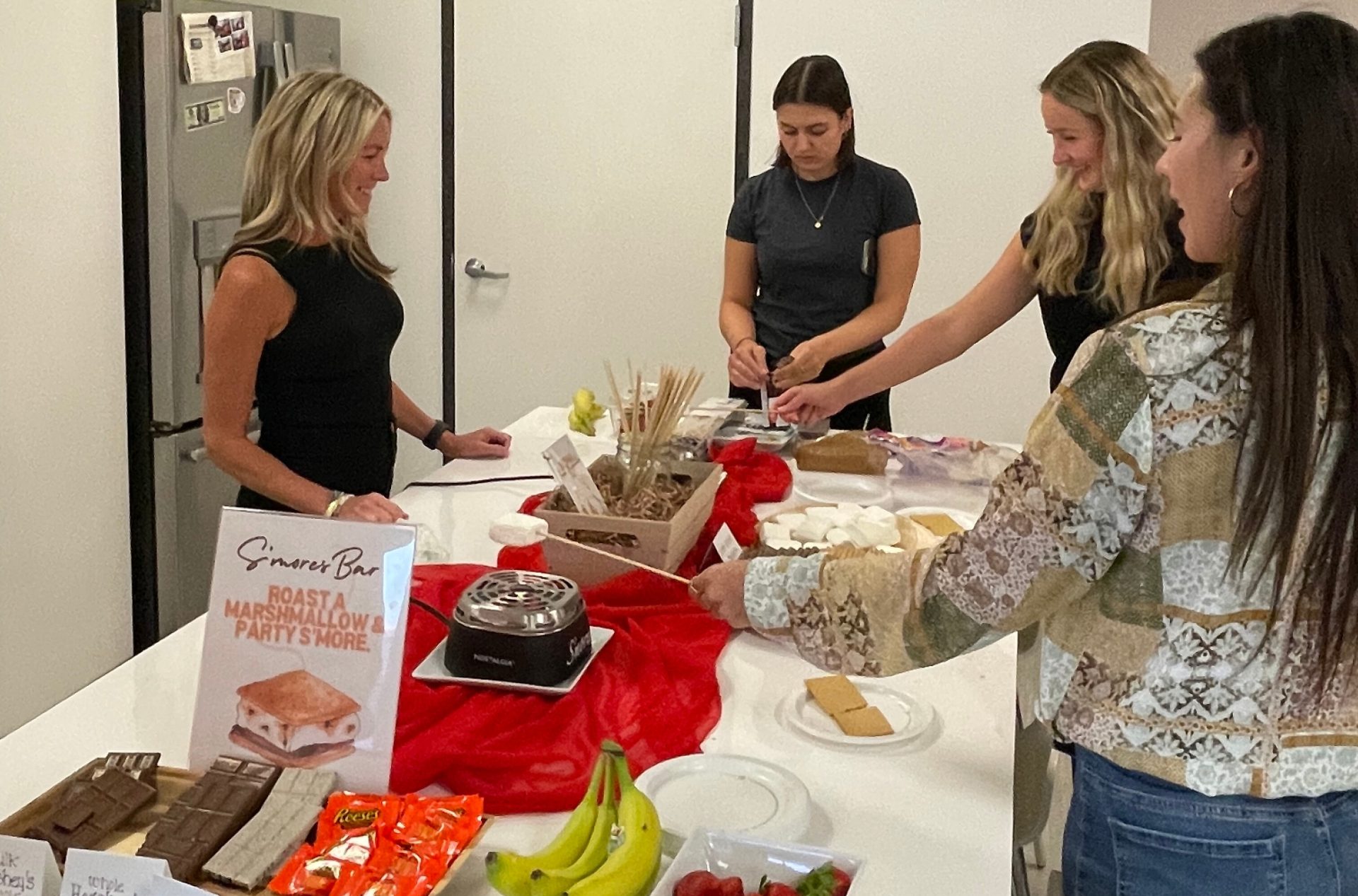In this day and age, a person-centered wellness approach may seem like an inevitable method. Customizations and personalizations accompany us everywhere. In marketing emails, in coffee orders, in shopping. Why should wellness not also be catered to each person as well?
A new wellness approach, called person-centric wellness, answers this question. Created by the Mather Institute, this fresh approach re-examines our definition of wellness. It invites senior living to ask, “how can we help support seniors in their personal wellness goals?”
The answer to this may just be the person-centric wellness approach. We’ll explain what it could mean for your senior living community.
Person-Centric Wellness
Person-centric wellness is the idea of focusing each wellness plan on the factors that influence individual well-being and personalizing wellness to each individual’s own goals and needs.
But, how are we even defining wellness? In the Mather Institute’s orange paper introducing their person-centric wellness model, wellness is defined as “the process of engaging in behaviors and decisions that enable people to reach their full potential.”
This broad definition allows for each person to curate their own idea of wellness based on their own experiences, values, and beliefs. It also reprioritizes how we view, talk about, and prioritize senior wellness in the senior living industry. Rather than focusing on the whole, we’re supporting the individual.
How is this different from whole-person wellness?
You’re likely familiar with the whole-person wellness model, also known as the six dimensions of wellness. Whole-person wellness has guided senior living wellness programs for decades, specifically since 1976. This model focuses on the different facets that combine to achieve whole-person wellness. The 6 factors are:
- physical
- emotional
- intellectual
- social
- spiritual
- vocational
This model aims at feeding each component to create a well-rounded wellness plan. The problem? This approach doesn’t take into consideration the differences between individuals, their environments, and their personal goals.
This is significant considering the generation of senior adults who are currently aging into their retirement years: the baby boomers. This blanketed approach of whole-person wellness doesn’t account for the individualistic nature and needs of the generation.
Individuality is a main characteristic of baby boomers, who are accustomed to a generally affluent and personalized lifestyle. Considering this individuality, creating a customizable wellness plan adheres more to the wants and personality of each individual rather than what we perceive is best for the entire generation.
The Person-Centric Wellness Approach Explained
The Mather Institute drew influence from sociological studies, mainly the Self-Determination Theory and the Social-Ecological Model, as well as results from its own Age Well Study. What resulted is a model designed to take into consideration both internal and external environmental factors that affect wellness. These are mainly individual, community, and societal factors.
This looks at how different environments affect one’s wellness, such as personal interests (individual), social networks (community), or political and cultural factors (society).
Within the individual component, internal factors focus on satisfying the following 3 drivers:
- Autonomy
- A person’s ability to control their own decisions and behaviors
- Achievement
- A person’s ability to experience accomplishment or mastery on their own terms
- Affiliation
- A person’s need to belong and connect with others
These 3 drivers are universal needs for individuals to feel fulfillment in their lives. So rather than aiming to satisfy each of the 6 dimensions of wellness, this looks at how one can achieve these 3 drivers—to fulfill their full potential—however they so choose.
Examining the results of the Age Well Study, the Mather Institute found that greater happiness and life satisfaction are in direct correlation with satisfying the 3 drivers.
Achieving these factors may look different for each individual. For example:
- Autonomy allows each resident the opportunity to choose their own participation level and which activities to join. This may look different for introverted and extroverted residents.
- Achievement may look like learning a new skill like water painting, mastering an existing skill like woodworking, or accomplishing individual tasks like writing a memoir.
- Affiliation may be achieved by building a community of friends with similar interests within the overall community. For example, a resident attending a book club with other avid readers.
Community and societal factors are the external factors that also influence wellness behaviors. For instance, your social network, community health resources, or political or religious beliefs that may influence your view of or participation in activities.
How might this approach affect your senior living community?
Don’t fret! Your wellness/activities team doesn’t need to throw out its current activities programming! This person-centric approach may just mean a shift in how your team approaches fulfilling wellness and potential. Rather than ensuring each facet is represented, this approach means supporting each resident in achieving autonomy, achievement, and affiliation in their own way.
This support can mean helping a resident overcome a challenge in the way of achieving a goal or providing resources to help them achieve a new skill. For example, providing a resident with tech support to ensure they are able to Facetime with their grandchildren (affiliation) or providing language resources for a resident wanting to learn a new language (achievement).
Here are a few ways that your team can fulfill a person-centric wellness approach:
- Provide activities for different skill levels (i.e., beginners, moderate, skilled) to allow for achievement
- Encourage residents to establish personal goals and create a plan of action for how to achieve them
- Offer ways in which residents can connect with external environments such as cultural events, religious services, or other organizations outside of the community
- Provide activities at multiple times throughout the day/week to allow residents to choose times that work best for their schedule and lifestyle
- Celebrate successes and skills mastered (i.e., an art show at the end of a painting course)
Utilizing Wellness In Marketing
Supporting residents in achieving their full potential is a sure way to ensure happiness, satisfaction, and a sense of community among residents. And remembering that the baby boomer generation wants to feel like they’re receiving personalized support for their own goals in retirement.
But a strong wellness program also serves as a positive lead-generating tool for prospects with big dreams in retirement. Introducing your wellness program to leads and prospects through positioning messages can help pique their interest in considering your community.
This positioning should complement your current brand messaging. Showcase your community’s numerous wellness opportunities with fresh images, testimonials from current residents, and a display of all that can be achieved within your community.
Ensuring a prospect feels that they’ll be supported and encouraged to achieve their lifelong dreams is an excellent way to start providing person-centric wellness, even before a prospect moves in.
The Importance of Company Culture
Company culture matters. And for some, it can be just as – or even more important than – salary. An uplifting workplace culture isn’t just a perk anymore; it’s one of the main contributors to an…
Help REALLY Wanted
New Perspectives on Hiring in Senior Living Are Picking Up Steam Hiring for senior living and retirement communities, particularly in higher levels of care, has historically been a challenge. But it’s one most communities have met…




